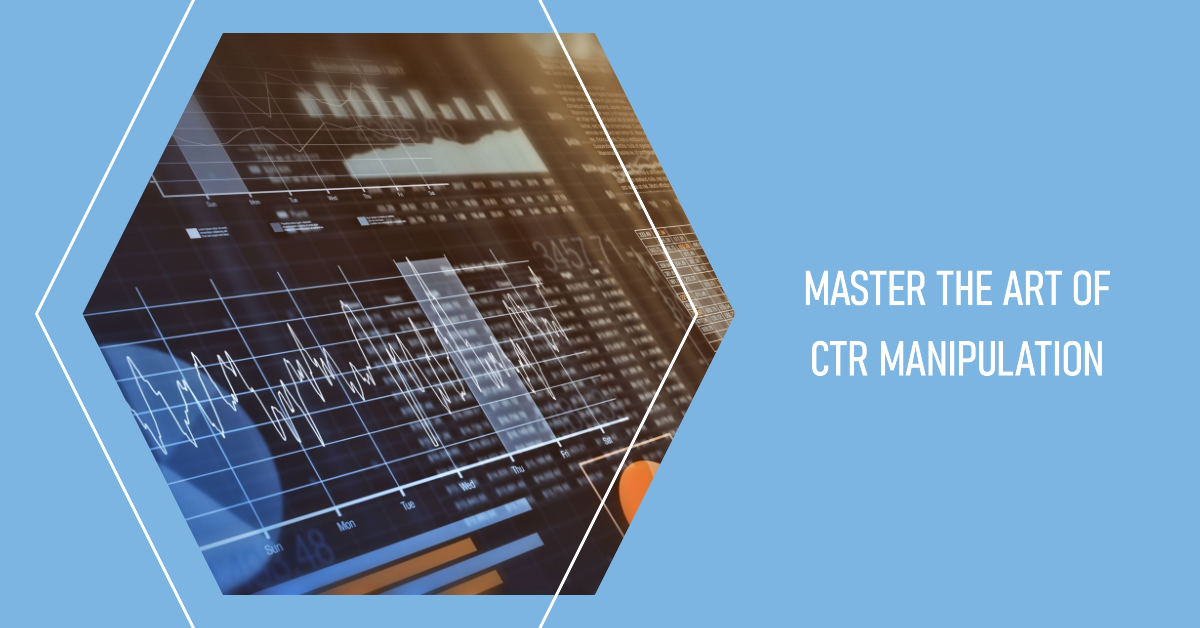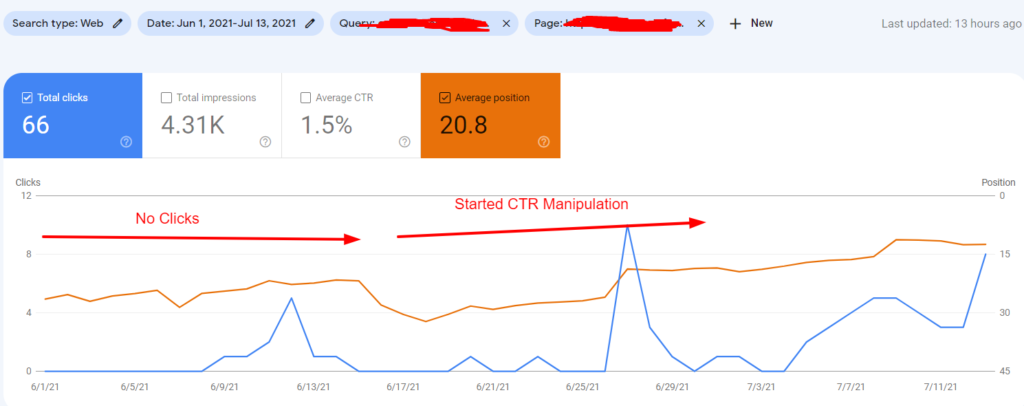LinkDaddy CTR Manipulation-- Proven Methods for Better Online Engagement
LinkDaddy CTR Manipulation-- Proven Methods for Better Online Engagement
Blog Article
CTR Manipulation: A Game Changer for Digital Projects
The rise of CTR control has undeniably changed electronic marketing approaches, offering marketing experts with devices to boost interaction and drive website traffic properly. What effects might this stabilizing act hold for the future of digital campaigns?
Recognizing CTR Manipulation
Although click-through rate (CTR) manipulation may look like a simple method in electronic marketing, it includes an array of approaches focused on synthetically inflating involvement metrics. This control can take numerous types, including using click farms, bots, or misleading advertisement placements that deceive customers into clicking. These approaches can endanger the stability of performance data, making it testing for marketing experts to assess the real performance of their campaigns.
Moreover, CTR control raises honest worries, as it undermines the transparency of electronic marketing. The dependence on inflated metrics can bring about misdirected marketing choices, skewing source allowance and project methods. Organizations might spend heavily in channels and methods that appear successful yet do not generate genuine interaction or conversions.

Benefits of Click-Through Rate Optimization
Maximizing click-through price (CTR) is vital for boosting the performance of digital advertising and marketing campaigns. A greater CTR indicates that a bigger proportion of individuals are involving with the web content, which can result in boosted website web traffic and much better conversion prices. By improving CTR, brands can successfully designate their advertising and marketing sources to campaigns that produce the highest returns.
Among the main benefits of CTR optimization is the possibility for enhanced ad positioning and lower prices - CTR Manipulation. Platforms like Google Ads award higher CTRs with much better advertisement positioning and reduced cost-per-click (CPC), allowing marketing professionals to stretch their budgets better. In addition, a well-optimized CTR can improve brand visibility, as higher involvement prices commonly associate with boosted organic reach

Methods for Effective CTR Control
To efficiently manipulate click-through rates (CTR), marketers can employ a range of critical techniques that improve individual interaction and drive traffic. One essential method is optimizing advertisement duplicate to create compelling and action-oriented language. CTR Manipulation. Using solid call-to-action (CTA) expressions motivates customers to take prompt action, increasing the possibility of clicks
Another effective strategy is A/B screening, which allows marketing professionals to compare different ad variants. By methodically analyzing performance metrics, they can determine which elements reverberate ideal with the target market, therefore fine-tuning their approaches for maximum effect. Furthermore, leveraging visually attractive graphics and succinct messaging can capture interest quickly, making it extra possible that customers will certainly engage.

Lastly, enhancing landing web pages to make certain a company website seamless user experience can reduce bounce prices and motivate further interaction, eventually promoting higher CTR. By integrating these techniques, marketing experts can successfully manipulate CTR to accomplish their campaign goals.
Determining Success in Digital Campaigns
Measuring success in electronic projects needs a clear understanding of essential performance indications (KPIs) that straighten with campaign objectives. KPIs work as measurable metrics that assist assess the performance of numerous strategies used throughout the campaign. Usual KPIs include click-through rates (CTR), conversion prices, price per purchase (CERTIFIED PUBLIC ACCOUNTANT), and roi (ROI)
To efficiently determine success, it is vital to develop particular, quantifiable goals first of the project. If the primary goal is to increase brand name awareness, metrics such as impacts and engagement prices may be focused on. In contrast, campaigns concentrated on direct sales would certainly benefit from a more thorough analysis of conversion prices and revenue created.
Regular analysis of these KPIs makes it possible for marketers to make data-driven decisions, optimizing their approaches in real-time. Utilizing logical devices can aid in tracking efficiency and identifying patterns, enabling speedy changes to boost project end results. Eventually, a comprehensive strategy to measuring success not just highlights areas for enhancement yet additionally reinforces the general performance of electronic advertising and marketing initiatives, driving sustained growth and interaction in the lengthy term.
Future Fads in Digital Marketing
Anticipating the future of digital find more information advertising discloses a landscape formed by quick technical advancements and altering consumer habits. As fabricated knowledge and machine knowing proceed to evolve, marketing professionals will progressively leverage these innovations to individualize projects at an extraordinary range. Anticipating analytics will certainly allow brand names to prepare for client requirements, enhancing ad placements and content delivery in genuine time.
Additionally, the increase of voice search and wise gadgets is transforming how consumers connect with electronic material. Marketing professionals will certainly need to adapt their strategies to ensure presence throughout several platforms, including voice-activated aides. This change requires a concentrate on conversational marketing, emphasizing engagement via discussion as opposed to conventional promotional tactics.
In addition, personal privacy issues are prompting changes in information collection methods. Transparency and moral data use will certainly become extremely important, driving brands to promote trust and loyalty amongst customers. The recurring evolution of social media sites systems will also influence you can try here marketing approaches, with an increased emphasis on credibility and user-generated web content.
Conclusion
In recap, CTR adjustment stands for a substantial innovation in digital advertising methods, using instant advantages through improved involvement metrics. The moral factors to consider surrounding such techniques necessitate a careful strategy to guarantee long-lasting brand integrity and authentic audience link. By striking a balance in between optimization methods and genuine engagement, marketing experts can cultivate lasting connections with customers. The continuous evolution of digital advertising will depend upon this fragile interplay, shaping the future landscape of brand-consumer communications.
Report this page